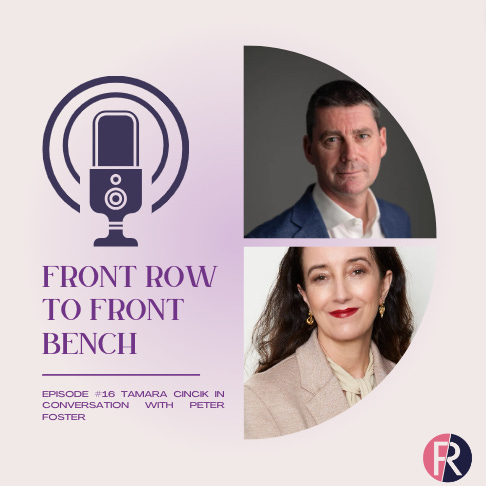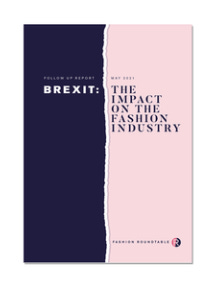Stephen Jones’ latest collection ‘Cymru’ encapsulates Welsh heritage
Our content editor, Meg Pirie, interviews Stephen Jones and presents bilingually in both English and Welsh.
by Meg Pirie
CYMRU Stephen Jones Millinery Spring Summer 2024 collection Model: Belladonna @ Future Model Management
Dress: Vivienne Westwood
Photographer: Paul Bryan
Stephen Jones is perhaps one of the most influential milliners of our century, bursting onto the London fashion scene during the explosion of street style in the late seventies. Yet even today, Jones’s designs have retained their modern and compelling edge. At the forefront of fashion, Jones’ hats are exquisitely crafted and quixotic – all whilst encapsulating the mood of the moment. Jones’ latest collection could not have come at a better time, where young people are reportedly leaving Wales, particularly in Welsh speaking heartlands, this collection offers hope. Entitled ‘Cymru’ and cited as a ‘love letter to Wales’ I delve further into the haunting magic of this collection – from the reimagined Welsh ‘Het’ to the use of Dylan Thomas poetry – ensuing a sense of strength and pride in Jones’ Welsh heritage.
Q: This collection is cited as a love letter to Wales, can you delve further into your heritage and connection to Wales as a place?
I’m from Towyn in North Wales, but originally my family are from Haverfordwest in South Wales, having eloped from Haverfordwest in the 1800’s.
Q. There is an untranslatable Welsh word called ‘Hiraeth’ often rendered for a type of longing for home and its culture and heritage. In creating this collection you credit some of its inspiration to your great great grandmother who eloped from Wales to Liverpool in the 1800's. Was the process of creating this collection therefore somewhat nostalgic?
It was somewhat nostalgic because I had a childhood often in Anglesey in North Wales, but no it wasn’t nostalgic when creating the collection, it was all new. That was the exciting thing.
Q. Considered to be one of the greatest Welsh poets of all time, Dylan Thomas is known largely for his imaginative use of language and the vivid imagery this cultivated, which was often rendered illogical and revolutionary. How does the use of Thomas’ work play out in the collection?
In a way Thomas’ poetry is too extreme for a hat, but I thought if you are thinking about Wales, it has to include him. So that’s why I have included one of his more optimistic poems, ‘In the beginning’.
Q. There is a prevailing myth that the traditional Welsh ‘Het’ was a Victorian invention, forming part of the ‘imagined’ Welsh heritage and identity. You have morphed this into a transparent cocktail hat containing a yellow pavé daffodil, which is Wales’ national emblem. How would you say hats reinforce an intrinsic sense of identity?
Because they are almost like shorthand for belonging. It’s a sign, as blatant as a road sign, or a British crown.
Q. There is currently an issue of Welsh language erosion in Wales, yet you have created all press materials bilingually in both English and Welsh. Why was this important to you?
I marvel at how I don’t understand it and I think it is something to be celebrated. In years past, Welsh was frowned upon and now it was an honour to be able to have this translated into Welsh.
Click through to listen to Stephen Jones in conversation with Tamara Cincik for our #FrontRowToFrontBenchPodcast here.
Mae casgliad diweddaraf Stephen Jones ‘Cymru’ yn ymgrynhoi treftadaeth Cymru
Gan Meg Pirie
Mountain, valley and waterfall trilby
CYMRU Stephen Jones Millinery Spring Summer 2024 collection Suit: John Alexander Skelton
Model: Belladonna @ Future Model Management Photographer: Paul Bryan
Gellid ystyried Stephen Jones yn un o hetwyr mwyaf dylanwadol ein canrif, gan fyrlymu i sîn ffasiwn Llundain yn ystod y ffrwydrad yn steil stryd ar ddiwedd y saithdegau. Ac eto hyd yn oed heddiw, mae dyluniadau Jones wedi cadw eu mantais fodern a chymhellol. Ar flaen y gad ym myd ffasiwn, mae hetiau Jones wedi’u crefftio’n goeth a chwicsotig – i gyd tra’n ymgrynhoi naws y foment. Ni allai casgliad diweddaraf Jones wedi dod ar amser gwell, lle dywedir bod pobl ifanc yn gadael Cymru, yn enwedig yn y fro Gymraeg, mae’r casgliad hwn yn cynnig gobaith. Yn dwyn y teitl ‘Cymru’ ac wedi’i ddyfynnu fel ‘llythyr cariad at Gymru’ rwy’n treiddio ymhellach i hud arswydus y casgliad hwn – o’r ‘Het’ Cymraeg wedi’i hail-ddychmygu i’r defnydd o farddoniaeth Dylan Thomas – gan ddilyn ymdeimlad o gryfder a balchder yn etifeddiaeth Gymreig Jones.
C. Cyfeirir at y casgliad hwn fel llythyr cariad at Gymru, a allwch chi ymchwilio ymhellach i'ch treftadaeth a'ch cysylltiad â Chymru fel lle?
Rydw i’n dod o Dywyn yng Ngogledd Cymru, ond yn wreiddiol mae fy nheulu yn dod o Hwlffordd yn Ne Cymru, ar ôl rhedeg ymaith o Hwlffordd yn y 1800au.
C. Ceir gair Cymraeg na ellir ei gyfieithu, ‘Hiraeth’, yn aml yn fath o ddyheu am gartref a’i ddiwylliant a’i dreftadaeth. Wrth greu’r casgliad hwn yr ydych yn rhoi clod i rywfaint o’i ysbrydoliaeth i’ch hen hen nain a rhedodd ymaith o Gymru i Lerpwl yn yr 1800au. Ai braidd yn hiraethus oedd y broses o greu’r casgliad hwn felly?
Roedd hi braidd yn hiraethus oherwydd ces i blentyndod a oedd yn aml ym Môn yng Ngogledd Cymru, ond na, doedd hi ddim yn hiraethus wrth greu’r casgliad, roedd y cyfan yn newydd. Dyna oedd y peth cyffrous.
C. Ystyrir ei fod yn un o'r beirdd Cymreig mwyaf erioed, mae Dylan Thomas yn adnabyddus i raddau helaeth am ei ddefnydd dychmygus o iaith a’r delweddau byw a feithrinwyd gan hyn, a oedd yn aml yn cael ei wneud i fod yn afresymegol a chwyldroadol. Sut mae’r defnydd o waith Thomas yn chwarae allan yn y casgliad?
Mewn ffordd mae barddoniaeth Thomas yn rhy eithafol i het, ond meddyliais os ydych chi’n meddwl am Gymru, mae’n rhaid ei chynnwys. Felly dyna pam yr wyf wedi cynnwys un o’i gerddi mwy optimistaidd, ‘In the beginning’.
C. Mae chwedl gyffredin mai dyfais Fictoraidd oedd yr ‘Het’ draddodiadol Gymreig, a oedd yn ffurfio rhan o dreftadaeth a hunaniaeth Gymreig ‘ddychmygol’. Rydych chi wedi trawsnewid hon yn het goctel dryloyw sy’n cynnwys cennin Pedr pavé melyn, sef arwyddlun cenedlaethol Cymru. Sut fyddech chi'n dweud bod hetiau yn atgyfnerthu ymdeimlad cynhenid o hunaniaeth?
Oherwydd maen nhw bron fel llaw-fer am berthyn. Mae'n arwydd, mor amlwg ag arwydd ffordd, neu'n goron Brydeinig.
C. Mae yna fater ar hyn o bryd o erydiad yr iaith Gymraeg yng Nghymru, ac eto rydych wedi creu holl ddeunydd y wasg yn ddwyieithog yn y Gymraeg a'r Saesneg. Pam roedd hyn yn bwysig i chi?
Rwy’n rhyfeddu at sut nad wyf yn ei ddeall ac rwy’n meddwl ei fod yn rhywbeth i’w ddathlu. Yn y blynyddoedd a fu, edrychwyd ar y Gymraeg yn anghymeradwy ac yn awr roedd yn anrhydedd gallu cael ei chyfieithu i’r Gymraeg.
Episode #16: Tamara Cincik in conversation with Peter Foster
TAMARA CINCIK in conversation with #16 PETER FOSTER
An honest and thought-provoking conversation – Public Policy Editor Peter Foster of the Financial Times, speaks with Tamara Cincik about his book, ‘What Went Wrong With Brexit: And What We Can Do About It’.
Foster is one of the few editors who is tracking Brexit and the ever adjusting life after the single market. A fashion-centred conversation of what leaving has meant for business; the realities of the barriers to trade; the confrontational relationship which ‘Brexit at all costs’ has created between ministers, civil servants and industry; and the need for policymakers to make decisions based on the reality of the issues that industry as a whole is facing.
Finally, while there’s no quick fix, Foster describes the importance of the relationships that are negotiated moving forward with the EU and the call for transparency about the trade-offs that come with trade deals.
To buy Peter Foster’s book, follow this link:
https://www.waterstones.com/book/what-went-wrong-with-brexit/peter-foster/9781805301257
Publisher: Canongate Books
Follow on report – Brexit: The impact on the fashion industry
To follow up on our 2018 Brexit and the Fashion Industry paper and the #Don'tMakeFashionHistory campaign – we led in unity with over 455 business leaders across the sector for our follow on Brexit report. We collated key data and insights to share the impact assessment on the fashion, textiles and fashion retail industry.
We hope you’ve enjoyed this week’s newsletter! We’ll be back in your inbox next Tuesday.
Don’t forget you can also subscribe to take advantage of added bonuses such as monthly press briefings, as well as access to Fashion Roundtable events in this space.









